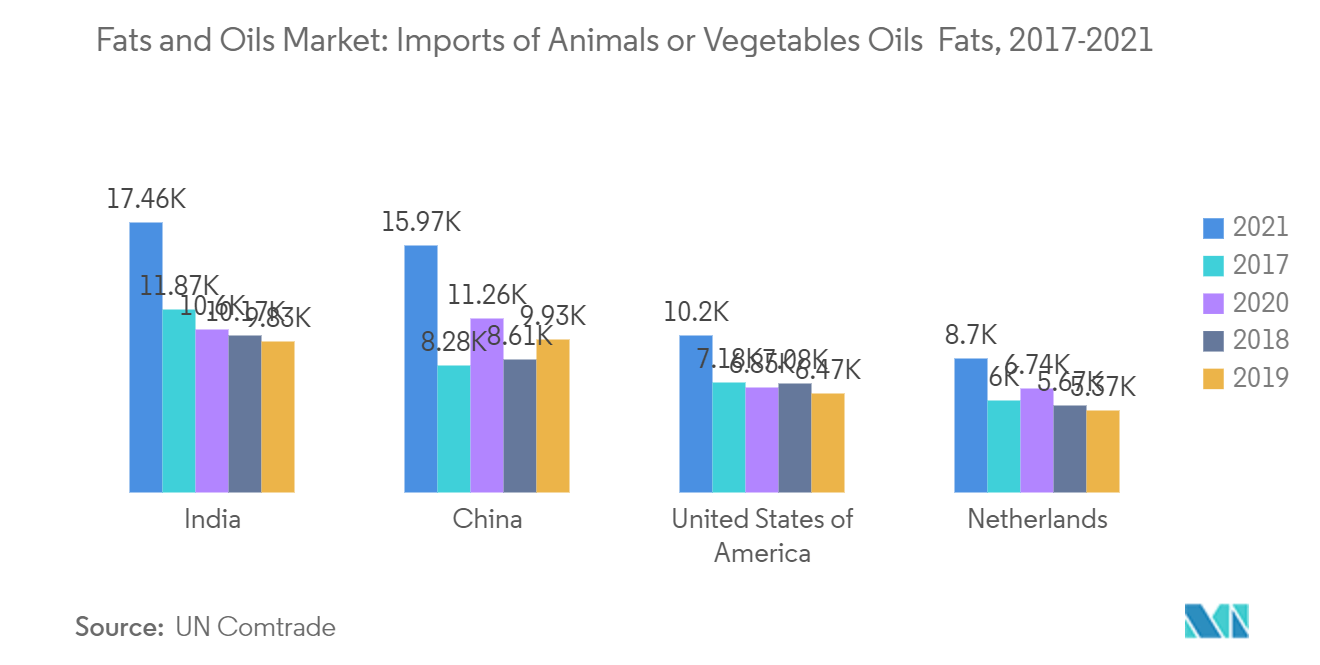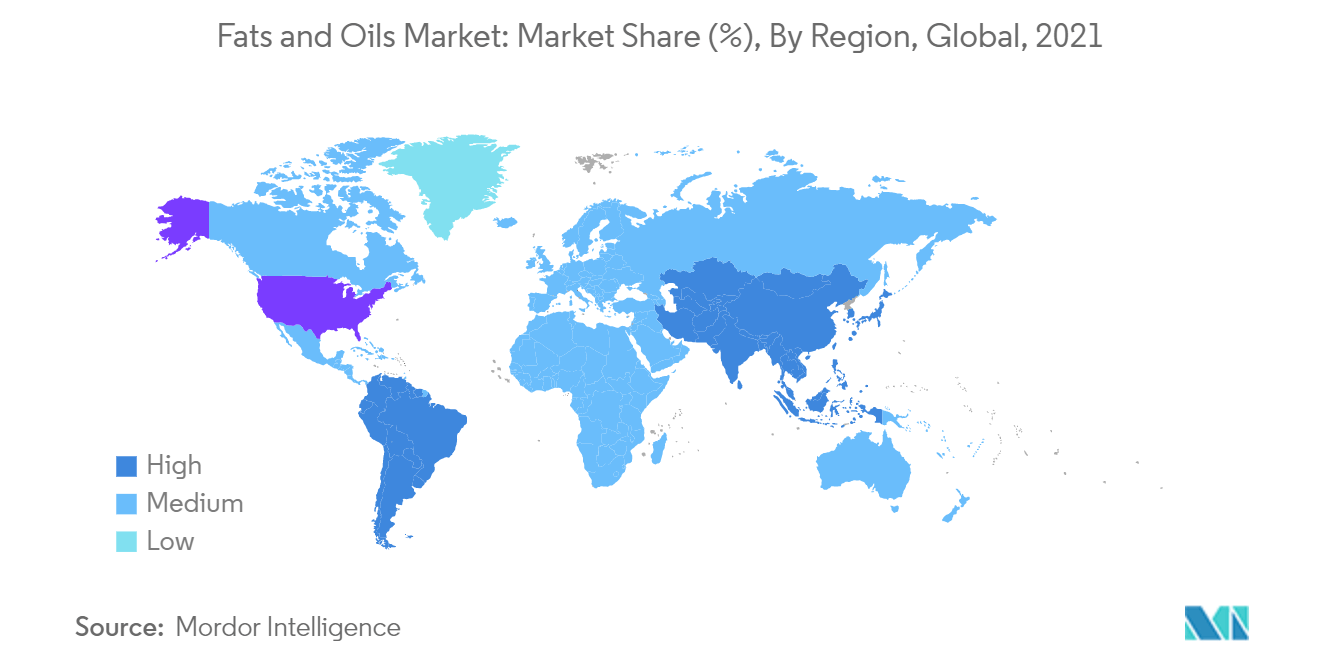Market Trends of Fats and Oils Industry
This section covers the major market trends shaping the Fats & Oils Market according to our research experts:
Increasing Demand for Vegetable Oil in Energy and Cosmetic Industry
- Fats and oils are used in various manufacturing processes. With the rising awareness of the sustainable use of fossil fuels, manufacturers are opting for vegetable oils instead of lubricants. They are now being employed as a sustainable form of production in industries such as paints, lubricants, and paper, without the need for chemicals. Non-food uses, particularly oleochemicals, account for a sizable portion of the market.
- Oils and fats are the sources of oleochemicals. Oleochemicals from palm oil have a better odor and color than those made from low-grade animal fats. In many applications, their increased C16 content and vegetable origin provide advantages. Vegetables are also used as cutting or metal working fluid (MWF) in machinery operations.
- After processing, the lubricant nature of vegetable oils makes them versatile and helps ease machinery operations, which can be a possible alternative to fossil fuels. With many manufacturers using vegetable oils as lubricants, the demand for vegetable oils has been increasing and driving the market positively.

Europe is the Fastest Growing Region in the Market
- A considerable number of policies have been implemented by the authorities of several countries that support the production and consumption of vegetable oils, thus boosting the market's growth. The European Union's vegetable oil consumption for biofuel has been primarily driven by the Renewable Energy Directive (RED).
- The EU member states (countries) must implement this target along with their national laws and incentives, such as blending mandates. Palm oil contributes to around 20% of the production of biodiesel (fatty acid methyl ester) and renewable diesel (hydro-treated vegetable oil) in the European Union.
- The other significant feed-stocks for producing diesel substitutes are rapeseed, used in cooking oils, and animal fats. Additionally, the amount of soybean oil used in biofuel production in the United States has been rising steadily due to the renewable fuel standard (RFS) and the biodiesel and renewable diesel tax credits. This trend is likely to continue in the foreseeable future.


